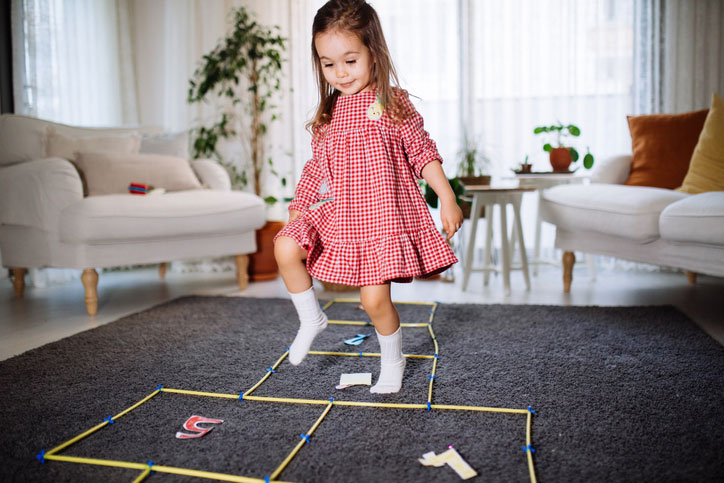The practice of speech-language therapy is a challenging, often demanding profession that requires professionals with a master’s level education, a post-graduate fellowship, state licensure, and, more often than not, national certification. Their advanced level of education and training qualifies them to assess, diagnose, and treat a wide array of speech, language, swallowing, and communication disorders.
It’s important work, for sure, but ask any speech-language pathologist (SLP) and they’ll likely tell you it’s also pretty darn fun. After all, it’s one of just a few professions that allow you to get on the floor and play with kids.
- Emerson College - Master's in Speech-Language Pathology online - Prepare to become an SLP in as few as 20 months. No GRE required. Scholarships available.
- Arizona State University - Online - Online Bachelor of Science in Speech and Hearing Science - Designed to prepare graduates to work in behavioral health settings or transition to graduate programs in speech-language pathology and audiology.
- NYU Steinhardt - NYU Steinhardt's Master of Science in Communicative Sciences and Disorders online - ASHA-accredited. Bachelor's degree required. Graduate prepared to pursue licensure.
- Pepperdine University - Embark on a transformative professional and personal journey in the online Master of Science in Speech-Language Pathology program from Pepperdine University. Our program brings together rigorous academics, research-driven faculty teaching, and robust clinical experiences, all wrapped within our Christian mission to serve our communities and improve the lives of others.
- Grand Canyon University - Online Master of Science in Speech-Language Pathology. - This STEM program focuses on training aspiring speech-language pathologists to offer compassionate, effective services to individuals with communication disorders
What are speech therapy exercises?
Informal, personal interactions marked by focused speech language exercises are at the heart of speech-language therapy. Structured speech therapy exercises are techniques and tools that encourage a child’s speech and language development. They’re a necessary part of improving a child’s speech, language, and communication skills and, when delivered as part of an engaging activity, are fun for young patients while still being a very effective part of therapy.
In fact, if you really want to connect with your pediatric clients, fun activities should be an essential part of every speech therapy session. Creativity should play a big role in your SLP practice. That means always having a new exercise or game in your SLP toolbox. Switching it up keeps your kids – and you, too, quite frankly – interested and engaged. It’s a win-win. A positive speech therapy session means working toward clearly defined SLP goals and having a good time, too. What could be better than that?
Keep things fresh in your practice by implementing new pediatric speech therapy exercises and you’ll soon find you’re having as much fun as they are.
We’ve curated a list of our favorite games aimed at language, voice exercises, speech therapy and more that are sure to get your preschool and school-aged clients engaged, excited, and looking forward to their next SLP session!
Speech and Language Exercises to Keep Your Clients Fully Engaged
You already have the skills necessary to deliver effective speech therapy exercises to your pediatric clients; now it’s time to kick your creativity and resourcefulness up a notch and turn them into games to keep those kids interested. Whether you’re looking for exercises that focus on sensory feedback, articulation, oral motor, or language acquisition, you’ll want to make sure you’re pulling out all the stops and providing them with exercises that are as entertaining as they are effective.
Get Hoppin’
 You already know that repetition is a solid technique in speech and language therapy, but encouraging kids to repeat the same sound or word multiple times is not fun for anyone. But it can be with a little creativity on your part. Create lily pad landing spots out of green craft foam and scatter them around the room. Ask your little “frogs” to repeat a target sound or word each time they jump from one lily pad to the next. They’ll be so busy hopping that they won’t see this repetition exercise as anything but fun! If you really want to outdo yourself, consider changing it up throughout the year by making jack-o-lantern, snowflake, heart, and bunny landing spots.
You already know that repetition is a solid technique in speech and language therapy, but encouraging kids to repeat the same sound or word multiple times is not fun for anyone. But it can be with a little creativity on your part. Create lily pad landing spots out of green craft foam and scatter them around the room. Ask your little “frogs” to repeat a target sound or word each time they jump from one lily pad to the next. They’ll be so busy hopping that they won’t see this repetition exercise as anything but fun! If you really want to outdo yourself, consider changing it up throughout the year by making jack-o-lantern, snowflake, heart, and bunny landing spots.
Toss It Around
Bean bags are always a fun addition to speech and language exercises. Get yourself a number of small, lightweight bean bags and keep them handy when you want to practice articulation drills with your kids. Allow your littlest clients to toss a bean bag to you, to each other, or into a basket other container each time they successfully practice their target sound or word. Challenge your older kids by placing baskets at varying distances and encouraging them to hit each basket.
You can also set up a tic-tac-toe board using just a simple piece of construction paper and mark each section with a target sound or word. As you land the bean bags on the squares, you’ll each call out the proper target sound or word associated with that square.
Treasure Hunting Fun
 Get yourself a sensory bin or two to hide small articulation cards and make hunting for treasure part of your preschoolers’ articulation exercises. It’s easy – purchase a small plastic bin and fill it with sand, rice, or dried beans. Bury the articulation cards of choice in the sensory bin and have your kids start digging for the “treasure.” Each time they find a card, ask them to practice the target sound or word on the card. Offering a small reward to your kids after they’ve found all the target words is a great way to round out this sensory activity.
Get yourself a sensory bin or two to hide small articulation cards and make hunting for treasure part of your preschoolers’ articulation exercises. It’s easy – purchase a small plastic bin and fill it with sand, rice, or dried beans. Bury the articulation cards of choice in the sensory bin and have your kids start digging for the “treasure.” Each time they find a card, ask them to practice the target sound or word on the card. Offering a small reward to your kids after they’ve found all the target words is a great way to round out this sensory activity.
Blow It Away
For many pediatric clients, dysarthria and other speech disorders require SLP exercises designed to strengthen the muscles of the mouth. Blowing through a straw to push a balloon or ping pong ball across the room is a great way to help them work on building these muscles. Create a finishing line and encourage your kids to see how fast they can get the ball across the room. Better still, challenge them to a race to see who can get their ball or balloon across the room first!
Hide-n-Speak
 Gather about a dozen plastic cups and your articulation cards. Place all of the cups upside down and hide articulation cards under each one, with the exception of one cup that you’ll hide a small prize under. As your clients lift each cup, they’ll practice the sound or word on the card that’s underneath until they uncover the prize. The excitement of finding the prize will keep them returning to the game time and again!
Gather about a dozen plastic cups and your articulation cards. Place all of the cups upside down and hide articulation cards under each one, with the exception of one cup that you’ll hide a small prize under. As your clients lift each cup, they’ll practice the sound or word on the card that’s underneath until they uncover the prize. The excitement of finding the prize will keep them returning to the game time and again!
Tell Me a Story
Whether you’re looking to improve a child’s articulation, disfluency, or expressive language, you’ll find that storytelling is a great way to get them talking. Encourage your kids to make silly stories with you by taking turns telling parts of the story. For example, you can start the story by saying, “Once upon a time, there was a big dinosaur who had a cavity but was afraid to go to the dentist.” Your student can then take over the story by telling a few lines and then passing it back to you, and so on until you have created a silly story that’ll leave you both laughing.
Bubbles!
 Blowing bubbles is a fun and exciting way to practice breath control with your kids. It’s also a great oral motor exercise because blowing requires them to perse their lips. Most SLPs will tell you that bubbles should be part of any early intervention speech therapy. After all, no one can resist the fun of blowing bubbles!
Blowing bubbles is a fun and exciting way to practice breath control with your kids. It’s also a great oral motor exercise because blowing requires them to perse their lips. Most SLPs will tell you that bubbles should be part of any early intervention speech therapy. After all, no one can resist the fun of blowing bubbles!
I Went to the Store and Bought…
Here’s a great way to get your pediatric clients talking and expanding upon their descriptive word vocabulary. It also requires them to pay attention, which is always a plus! Start the game by saying, “I went to the store and bought milk.” The child then continues the grocery list by adding the item you said, along with a new item. For example, they may then say, “I went to the store and bought milk and fruit snacks.” See how many items you and the child can remember on the list! This is also a great game to play when working with multiple children in a school-based setting. Have them sit in a circle and play the game by moving around the circle and asking each child to add to the list.
Hopping Fun
Hopscotch is another great way to encourage your kids to practice their target sounds or words while getting up and moving! Create a hopscotch board using inexpensive, interlocking puzzle floor mats and then encourage the child to say the target sound or word each time they hop on the hopscotch board. Or, you can also attach target words or sounds to each hopscotch number and ask the child to sound out each word when they hop on it.
Moving Right Along
Toy cars are a fun way to get your younger kids talking. Create a roadway throughout the room using tape or yarn, and make several “stops” that include the target word, sound, or sentence. As the child reaches each stop, encourage them to sound out the target word or sentence before moving on toward the finish line.
There are complementary techniques to support speech therapy. Here’s the Top 5 Alternative and Complementary Modalities to Pair with Speech Therapy.
